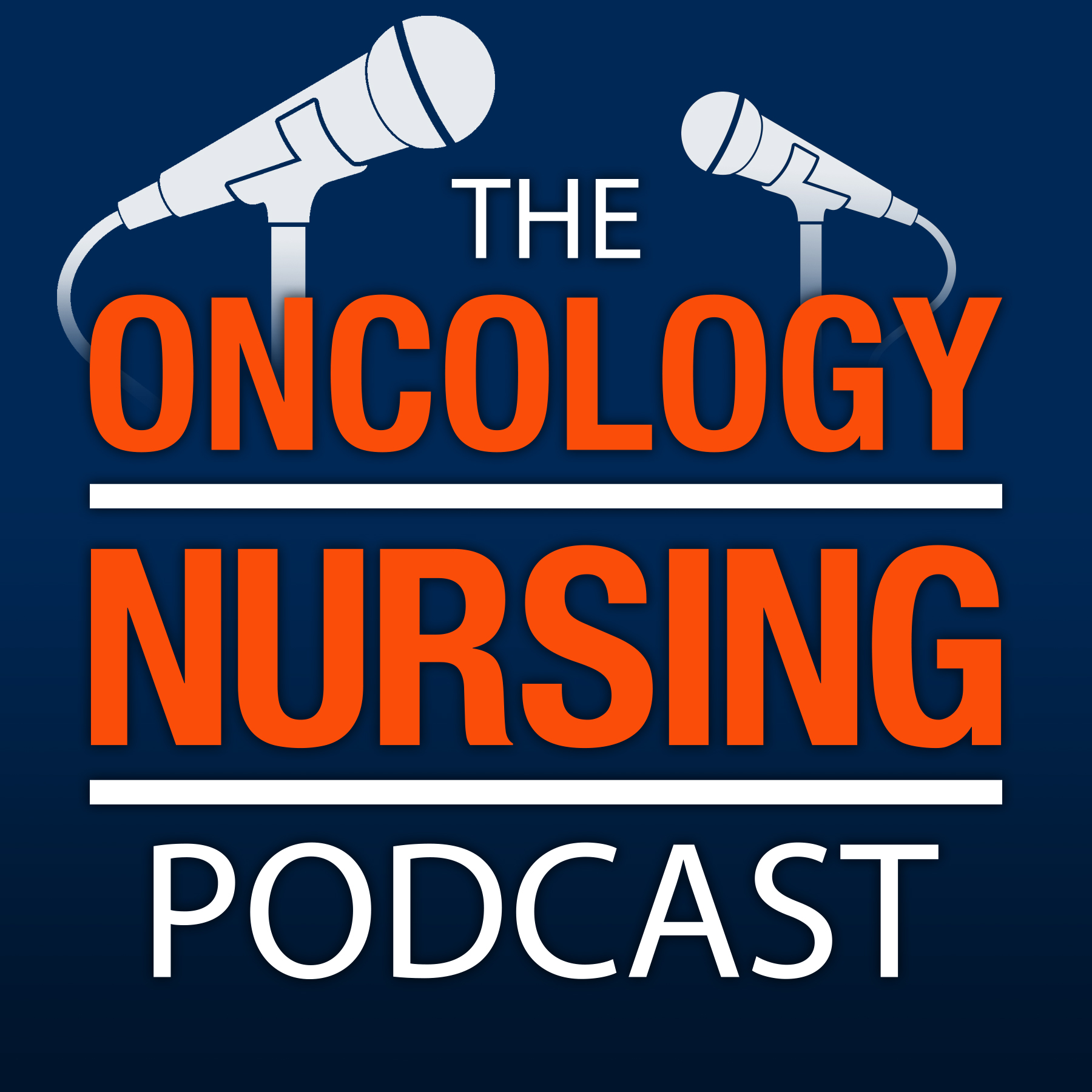
Shownotes Transcript
“It’s the oncology nurse who might be the only cheerleader this person has to keep them motivated moving forward. We need to make sure our patients’ motivation and competence stay high so that they can stay on this journey of quitting,” ONS member Maureen O’Brien, MS, RN, PMHCNS, NCTTP, a certified tobacco treatment specialist at the Memorial Sloan Kettering Cancer Center in New York, NY, told Jaime Weimer, MSN, RN, AGNCS-BC, AOCNS®, oncology clinical specialist at ONS, during a discussion about the benefits of smoking cessation for patients with cancer and how oncology nurses can encourage reduction or quit attempts and support their patients through the process. You can earn free NCPD contact hours after listening to this episode and completing the evaluation linked below. Music Credit: “Fireflies and Stardust)” by Kevin MacLeod Licensed under Creative Commons by Attribution 3.0 Earn 1.0 contact hour of nursing continuing professional development (NCPD) by listening to the full recording and completing an evaluation at myoutcomes.ons.org by February 17, 2025. The planners and faculty for this episode have no relevant financial relationships with ineligible companies to disclose. ONS is accredited as a provider of NCPD by the American Nurses Credentialing Center’s Commission on Accreditation. Learning outcome: The learner will report an increase in knowledge related to smoking treatment of people with cancer. Episode Notes Complete this evaluation for free NCPD).
Oncology Nursing Podcast Episode 110: FDA Takes on Tobacco Use and Its Impact on Cancer Care)
ONS Voice articles:
Nurses Must Take the Lead in Tobacco Cessation)
Oncology APRNs Are Change Agents for Tobacco Cessation)
When Healthcare Professionals Join Organizations to Advocate, Patients’ Voices Are Heard)
Other articles about tobacco and cancer)
*Clinical Journal of Oncology Nursing* articles:
Tobacco Dependence Treatment: Examining Cessation Effectiveness in Oncology Settings)
Smoking Cessation: An Oncology Clinical Nurse Specialist–Led Program)
Selection of Optimal Tobacco Cessation Medication Treatment in Patients With Cancer)
*Oncology Nursing Forum* article: Smoking Prevalence and Management Among Cancer Survivors)
ONS E-Cigarettes and Vaping Learning Library)
ONS position statements:
Use of E-Cigarettes and Vaping)
International Society of Nurses in Cancer Care Tobacco Position Statement)
*Cancer* article: Training Oncology Care Providers in the Assessment and Treatment of Tobacco Use and Dependence)
Memorial Sloan Kettering Cancer Center tobacco programs:
Assessment and Treatment of Tobacco Dependence in Cancer Care)
Four-Day Tobacco Treatment Specialist Training Workshop)
Agency for Healthcare Research and Quality: Treating Tobacco Use and Dependence: Public Health Service Clinical Practice Guideline)
Centers for Disease Control and Prevention:
Smoking and Tobacco Use)
The Brief Tobacco Intervention)
American Cancer Society: Health Benefits of Quitting Smoking Over Time)
American Lung Association)
QuitAssist)
U.S. Food and Drug Administration: Health Effects of Tobacco Use)
To discuss the information in this episode with other oncology nurses, visit the ONS Communities). To provide feedback or otherwise reach ONS about the podcast, email [email protected]). Highlights From Today’s Episode “For every person who dies from smoking, at least 30 people will live with a serious smoking-related illness. Smoking causes cancer; heart disease; strokes; lung diseases, including chronic obstructive pulmonary disease, which include emphysema and chronic bronchitis; and diabetes. 87% of all lung cancers are directly linked to smoking. . . . One out of every three cancer deaths are directly related to smoking.” Timestamp (TS) 11:50 “When and if a patient continues to smoke with a cancer diagnosis, it’s because there’s a high nicotine dependence. They’re smoking to manage their withdrawal symptoms. The biggest withdrawal symptoms are anxiety and depression. And one might say that just being diagnosed with a cancer diagnosis is very anxiety-provoking. . . . They get very, very anxious, and the nicotine receptors in the brain will actually tell them to have a cigarette.” TS 15:58 “One of the byproducts of tobacco is carbon monoxide, and that is retained in the lungs. . . . And in eight hours, we can start to reverse that. In 24 hours, the risk of a heart attack decreases if you stop smoking. In about two weeks to three months after stopping smoking, your circulation starts to improve and your lung function increases.” TS 27:43 “As an oncology nurse, I think we need to start really focusing on some of the positive reasons why patients need to stop smoking in any prognosis that they have across the board. I think people respond to positive feedback better than negative feedback. That’s why the benefits of smoking cessation for patients with cancer are so important to talk about.” TS 29:35 “It’s the oncology nurse who might be the only cheerleader this person has to keep them motivated moving forward, and that’s what we need to do. We need to make sure our patients’ motivation and competence stay high so that they can continue on this journey of quitting.” TS 31:50